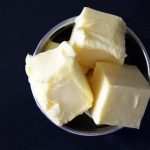Computer-Aided Design (CAD) is a useful tool in new product development (NPD) for the food scientist. It is often encountered in food safety, product and packaging design. The list of options is endless:-
1. Generating product profiles that fit or match a specification. The food stuff can be pictorially represented to see if it fits with the customer’s visual expectation. It also helps when checking how the package or product fits with a required portion size.
2. Modelling ingredient interactions
2. Modelling sensory profiles especially when linked to organoleptic data.
3. Predicting temperature changes in cooked or heated foods, as part of a food safety assessment.
4. Generating a microbial assessment for food safety purposes especially when a shelf-life must be predicted.
5. Creating HACCP flow-charts especially when linked to food safety modelling.
6. Packaging design and generating labels. It helps greatly to refine proposed descriptions and pictorials of products such as fitting labels or pictures onto packs without generating a mock-up. The accuracy, precision and consistency of a design is greatly improved upon using CAD.
7. Generating artwork and labels – nutritional profiles are especially valuable here.
8. Packaging can be scaled to suit requirements especially when designing ergonomic or sustainable packages. Producing nets of packaging is highly useful.
9. CAD is now used with 3-D printers to create tangible models of a product.
One of the most valuable aspect is the speed and accuracy associated with this technology. Nowadays, it’s a common question of GCE Food technology exams ! If anyone can think of any advantages or disadvantages I’d be interested to know.

CAD is so useful in design. it helped me in my design project visualise the final drafts of the design but it does take a bit of time to master in my opinion.
Really interesting.